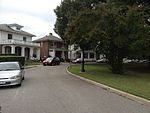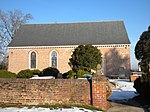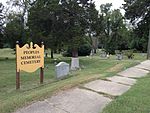Battle of Blandford

The Battle of Blandford (or Blanford), also called the Battle of Petersburg, took place near Petersburg, Virginia on 25 April 1781, late in the American War of Independence. Roughly 2,300 British regulars under the command of Brigadier General William Phillips defeated about 1,000 militia under Major General Baron von Steuben. The introduction of a British troop presence led by turncoat general Benedict Arnold into Virginia in early 1781 prompted an increase in militia activity to counter the British force. The militia were, however, poorly trained and equipped, and were unable to prevent Arnold from moving freely. Arnold was reinforced in March 1781 by additional troops led by General Phillips, who targeted Petersburg in a raiding expedition. Militia forces led by von Steuben and Peter Muhlenberg decided to make a stand at Blandford, then a separate community. When the battle was joined, the outnumbered militia provided remarkably stiff resistance to the British advance, and executed a disciplined retreat across the Appomattox River, avoiding a flanking attempt led by John Graves Simcoe. They eventually retreated to Richmond, where they joined forces with Continental Army troops led by the Marquis de Lafayette. Philips and Arnold continued to launch raids, and eventually joined forces with Charles Cornwallis's army from North Carolina.
Excerpt from the Wikipedia article Battle of Blandford (License: CC BY-SA 3.0, Authors, Images).Battle of Blandford
Bollingbrook Street, Petersburg
Geographical coordinates (GPS) Address Nearby Places Show on map
Geographical coordinates (GPS)
| Latitude | Longitude |
|---|---|
| N 37.23438 ° | E -77.3939 ° |
Address
Bollingbrook Street 718
23803 Petersburg
Virginia, United States
Open on Google Maps










